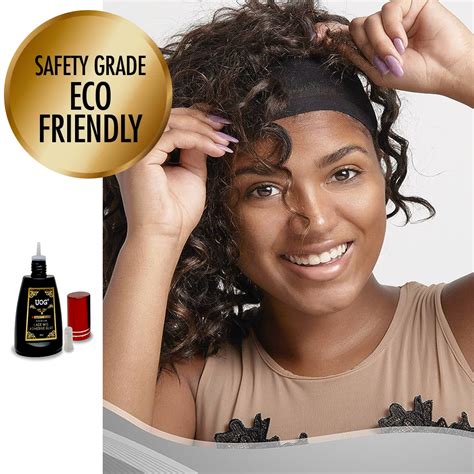Wigs have become increasingly popular over the years, offering wearers a versatile way to change their appearance and express their individuality. However, finding the right glue to keep a wig in place is essential for a natural look and comfortable wear.

Choosing the Best Wig Glue
The type of glue you choose will depend on factors such as your wig material, scalp type, and desired hold. Here are some key considerations:
- Type of Wig: Human hair wigs require a stronger hold than synthetic wigs.
- Scalp Type: Sensitive scalps may need a less irritating glue.
- Hold Strength: The thickness and weight of your wig will determine the hold strength you need.
- Application Time: Consider the drying time of the glue and its ability to hold the wig in place for extended periods.
- Removal Procedure: Choose a glue that can be removed easily and without damaging the wig or your scalp.
Top 5 Wig Glues
- Ghost Bond Lace Wig Glue: Known for its strong hold and invisible bond. Ideal for human hair wigs and lace fronts.
- Got2b Glued Blasting Freeze Spray: A spray-on adhesive that provides a secure hold without leaving a residue. Suitable for synthetic wigs.
- Walker Tape Ultra Hold Adhesive: Offers a medical-grade hold that lasts up to 6 weeks. Ideal for individuals with sensitive scalps or heavy wigs.
- Pro Hair Labs Bold Hold Lace Glue: Formulated with a natural, latex-free formula that creates a flexible bond with minimal irritation.
- Lace Locker Wig Adhesive: A water-based adhesive that is sweat-resistant and provides up to 6 hours of hold. Suitable for all wig types.
How to Apply Wig Glue
- Clean and Prep: Remove any oils or dirt from your scalp and wig cap with an alcohol-based cleaner.
- Apply Glue: Apply a thin layer of glue to the wig cap and the perimeter of your scalp.
- Press and Hold: Press the wig onto your head and hold it in place for several minutes to allow the glue to set.
- Styling: Style your wig as desired.
Tips for Removing Wig Glue
- Dissolve: Use a glue dissolving spray or oil to break down the glue.
- Be Patient: Removal may take some time and effort. Avoid pulling at the wig or scalp.
- Clean: Use warm water and a gentle shampoo to remove any remaining glue residue.
Health and Safety Considerations
- Avoid using glues containing harsh chemicals that can irritate the scalp or cause allergic reactions.
- If you experience any redness, itching, or discomfort, remove the wig immediately and consult a medical professional.
- Store wig glue in a cool, dry place to prevent deterioration.
Conclusion
Choosing the right wig glue is crucial for a seamless and comfortable wig experience. By considering your individual needs and following the application and removal instructions carefully, you can achieve a natural and secure hold for your wig.
